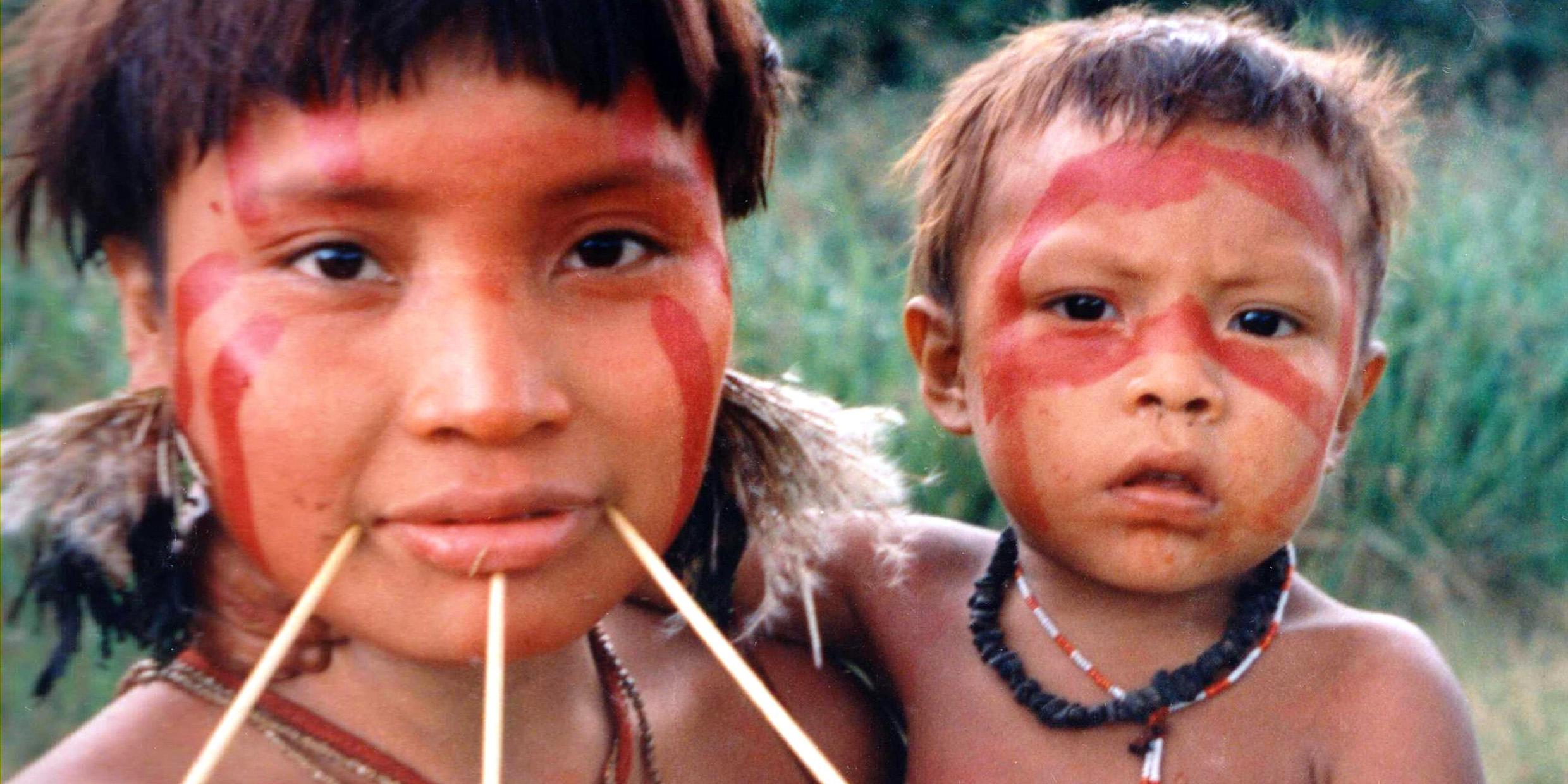Originally published 11 February 1991
The saga of the Yanomami continues. If the story were filmed by Hollywood, we would now be into the sequel to the sequel, “Yanomami III: The Romance.” But before we get to the love story, let’s back up to the original film.
“Yanomami: The Science.” For 25 years, anthropologist Napoleon Chagnon, of the University of California at Santa Barbara, studied the Yanomami Indians who live in the Amazon rainforest near the border of Venezuela and Brazil. In 1968, he published a best-selling book, Yanomami: The Fierce People, and in early 1988 summarized his investigations in a widely-read article in the journal Science.
According to Chagnon, the most striking thing about the Yanomami is the ferocity of the males, who revel in violence. Thirty percent of Yanomami males die violently, and almost half of the males over the age of 25 have participated in a killing. They fight, says Chagnon, over “reproductive resources,” or put more simply, women.
Chagnon suggests a connection between the procreative drive and violence that may be innate and common to all of humanity. “One thing you can never get enough of is sex,” he says. Sex and violence go hand and hand, Chagnon implies, and the Yanomami merely act out tendencies that civilized societies usually manage to hold in check.
Nature or nurture?
Not all anthropologists agree that an inborn tendency toward sex-driven violence is required to explain Yanomami behaviors, citing environmental stress and competition for food resources as alternative explanations. The battle between Chagnon and his critics is the latest skirmish in the nature-nurture war: Is human behavior best explained by genes or environment?
Which brings us to the sequel.
“Yanomami II: The Exploitation.” It turns out that Yanomami territories contain one of the world’s richest deposits of gold. Beginning in 1987, tens of thousands of gold miners have swarmed like locusts into the Yanomami homelands of northern Brazil, many times more miners than there are Indians. The Yanomami way of life has been disrupted, their land stripped, their streams polluted. Within a few years, more than a tenth of the Indians have died from tuberculosis, venereal disease, and malnutrition caused by the dwindling supply of fish and game.
It is not the first time that a Native American culture has been disrupted, or even extinguished, in a rush for gold. It began when Christopher Columbus first set foot onto American soil. What gives the Yanomami story a new twist is the way Napoleon Chagnon’s science has been turned against the Indians.
According to certain Brazilian anthropologists, Chagnon’s depiction of the Yanomami as a fierce, violent people plays into the hands of the mining companies who seek to exploit their territory. After all, claim the miners, who will miss a few wretched Stone Age people who would as soon put an arrow into you as look at you.
Chagnon defends the integrity of his science. “People have been killing Indians for 500 years without knowing the word anthropology,” he correctly points out. It will be better for the Yanomami, say Brazilian anthropologists, if scientists emphasize Yanomami behaviors other than violence.
Which brings us to the sequel to the sequel.
Residing with the Yanomami
“Yanomami III: The Romance.” In 1975, Kenneth Good, a graduate student in anthropology, joined Napoleon Chagnon for 15 months of field work in Venezuela. The 15 months turned into 11 years of almost permanent residence among the Indians. In time, Good learned their language and shared their semi-nomadic way of life. At the suggestion of the shaman-headman of his village, he took as his wife a very young Yanomami girl, Yarima.
Good describes his relationship with Yarima in a recently-published book, Into the Heart: One Man’s Pursuit of Love and Knowledge Among the Yanomami, co-authored with David Chanoff. It is a bizarre, sometimes violent, often tender love story that bridges two wildly different cultures. Today, Yarima and Kenneth Good live in New Jersey with their children, David and Vanessa. Kenneth teaches anthropology at Jersey City State College.
Once the couple had forsaken the rainforest for a home in the United States, their marriage was regularized by a judge. At the appropriate point in the ceremony, the judge asked the bride the traditional question about taking one’s spouse “in sickness and in health, for richer or poorer, until death do you part.” Her response is recorded in Good’s book.
Kenneth translates for Yarima. She answers in her own language: “Tell the pata (judge) that I am your wife. If you cannot leave our hammock, I will go down to the river and get you water. I will harvest plantains and roast them for you on the fire. Tell the pata that I will gather fruit and honey for you. I will cook your meat. I will care for you and do all these things even when you are very old. Even then I will be you wife.”
“I presume,” the judge says,” that’s a yes?”
“Yes,” answers Kenneth Good. “That’s a yes.”
And so a best-selling work of anthropology, Chagnon’s Yanomami: The Fierce People, begins to look a bit less fierce — perhaps just in time to help save the Yanomami from extinction.
David Good, the son of Kenneth and Yarima, has founded a non-profit to help support the education, healthcare, and preservation of the Yanomami people. ‑Ed.



